Contents
Starting pig farming as a business, having succeeded in business, and not being disappointed in it, is possible only after a careful calculation of the necessary costs and risks. Any type of business is a risky business. Agriculture ranks high on the list of high-risk businesses. And among the agricultural sectors, the most risky, but also the most profitable types of business are poultry and pig farming.
Pig farming as a business: is there any benefit
It must be said directly that any business that exists in the world makes a profit. Somewhere more, somewhere less, but there is always a profit. Otherwise, the business will die. Another issue is that sometimes in order to make a profit, it is necessary that production be carried out in very large volumes.
The profitability of pig breeding is one of the highest of all livestock industries. This is proved by the example of agricultural complexes growing like mushrooms, where pigs are bred. Piglets grow quickly, the sow brings an average of 10 cubs per farrow, and piglets 2 times a year. But this is also a problem for pig production at home. Even two sows plus 20 piglets can create serious problems for the owner of a private home with sanitary and veterinary services.
Private traders usually do not breed pigs, but take piglets for fattening. It’s easier than keeping pigs year-round. But raising pigs for meat cannot be considered as a business either. Rather, it is an addition to the main income and providing the family with high-quality and fresh meat.
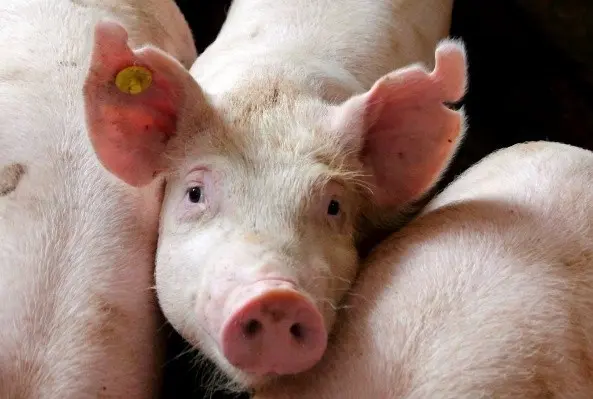
Is it profitable to keep pigs for the sale of meat
Profit from pig farming as a type of business directly depends on the “shaft”. A complex for 5-10 thousand pigs will give a higher percentage of profit per 1 pig than a private trader with a small livestock. Much depends on the ability to purchase large-scale batches of feed in “wagons” and the automation of the process of fattening pigs. A rough estimate shows that keeping pigs for the sale of meat at home can be quite profitable: the cost of feed for 6 months is 10260 rubles, the sale of pork is 27000 rubles. But such a rough calculation is made on the basis of the cost of a bag of compound feed, keeping a pig for 6 months and selling 100 kg of pork. In fact, everything will not be so. The cost of succulent feed and premixes must be added to the price of compound feed for pigs, and 5400 rubles should be subtracted from the income after the sale of pork: the maximum slaughter yield of pork that can be sold does not exceed 80% of live weight.
And the profitability of the business is already falling. As a result, for the year the income will be 1 thousand rubles. per month for each pig raised. For this reason, the owners of the complexes do not waste time on trifles, building farms for several thousand pigs. The cost of a large wholesale batch of feed for pigs from the manufacturer will be 3-4 times lower. Sometimes they also produce their own feed. Automation allows you to reduce the number of employees on the farm. With automatic cleaning and feeding, one employee can serve up to 5 thousand pigs. But the initial investment in such a complex is considerable. But there is also an opportunity to save money at the initial stage of the business, if you do not build a complex from scratch, but rent an old Soviet-built farm.
An example of such a business start on video
A private owner in the village will be able to keep no more than 15 pigs, provided that the size of the plot allows it. Accordingly, you can earn 15-20 thousand per month by growing piglets for meat at home. But this is subject to the “hand-made” sale of pork. It is already unprofitable to hand over carcasses to resellers.
Is it profitable to keep pigs for the sale of piglets
If there is a strong demand for piglets in the immediate area, it may be more profitable to keep several sows for the sake of selling piglets. Feed costs for the pig will be the same as for fattening. The sow does not need to gain much weight, but she needs to feed the brood, and this means an increased diet. If a pet pig could consume no more than 2 kg of compound feed, then a lactating sow should receive the same 3 kg plus milk-based succulent feed.
In relation to the brood of a pig – “neat”. The sow brings piglets 2 times a year: 4 months of pregnancy, 2 months of feeding, after which she comes back to hunting. 2-month-old piglets can already be sold. The price of young pigs varies depending on the region and breed in the range of 1,5-4 thousand rubles.
If we consider breeding piglets as a business, you need to know the demand and prices for young animals.
The advantage of selling piglets is that a larger number of pigs can be kept on a personal plot than when grown for meat. The trick is that as long as the piglets are in the same pen with the sow, they are counted as one individual. As soon as the piglets are separated, they will be counted by their heads.
A pig will eat feed for 10,3 thousand rubles in six months. Pigs are accustomed to solid food early enough, but the score in the first month goes literally per gram. A brood of 10 piglets will eat feed in the amount of no more than 2 thousand rubles in 3 months. The total costs will amount to 13,3 thousand rubles. Income from the sale of a brood of 40 thousand rubles. As a result, from one pig you can get 26,7 thousand rubles every six months. For the year 53,4 thousand rubles. From 5 adult pigs 267 thousand rubles. The monthly income of the owner of the site will be 22 thousand rubles.
A rough estimate shows that when considering keeping pigs as a business at home, it is much more profitable to raise piglets than to raise animals for meat. With this type of business, there are no problems with slaughtering pigs. This procedure should be carried out in specially equipped places, but easier in slaughterhouses.

Is it profitable to breed pigs
A very limited number of animals can be kept in a private backyard. If you are engaged in a serious business of raising and fattening pigs, you will have to make a pig farm. It is unprofitable to breed any mono-type of livestock on a personal plot. And usually no one lives only from their subsidiary plots. That’s why it’s helpful. The owners of private houses in the villages keep not only pigs, but also cows or goats, chickens and other poultry. And with the development of large farms and the appearance of cheap meat in stores, they often prefer to get rid of cattle, since the cost of “homemade” products is much higher than prices in stores.
This means that it is profitable to keep pigs for sale if the animals are bred on the farm in large quantities. That is, at least a farm should be registered.
Provided that the cost of one piglet is 4000 rubles, 10 thousand rubles will be required to buy 40 pigs. An additional 8 thousand rubles will be required to raise piglets up to 103 months.
It is impossible to indicate the cost of arranging a farm, since there are a lot of variable factors in this scenario:
- empty land plot – finished buildings;
- communications are summed up – not summed up;
- purchase of land – lease;
- automatic drinking bowls – manual drinking;
- automatic feeders – manual feeding;
- manure cleaning manually, semi-automatically, using a conveyor;
- slaughter on the spot – at the slaughterhouse;
- remoteness from infrastructure or proximity.
These farm costs can only be determined locally and for a specific plot. Even the cost of the project, no one can say without knowing which piece of land is chosen for the farm. Therefore, the cost of arranging a farm can range from positive 1 million rubles. to depressive tens of millions.
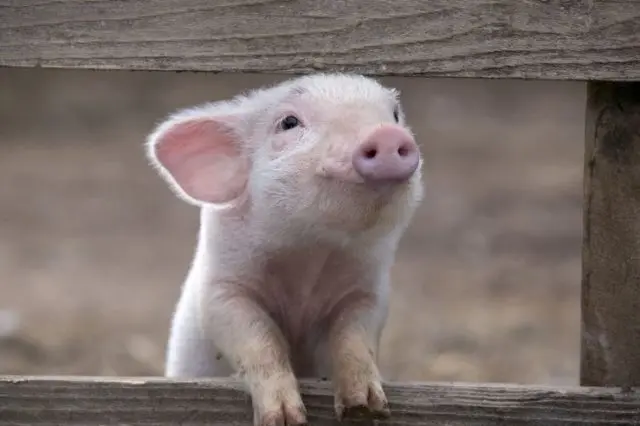
Where to start
Before you start compiling a business plan for pig farming in order to get a loan from a bank, you need to decide on the type of economic activity and the place for the farm. Perhaps there is no suitable site for a pig farm nearby, and you will have to move to a new place of residence or do something else. If there is a suitable site or ready-made buildings, the issue of registering an individual entrepreneur, private farm or LLC depends on the preferences of the entrepreneur. But only on condition that the farm will belong to one person. If several people invest in the business, an LLC will need to be registered. The latter will always be a legal entity, while an individual entrepreneur or private farm can open an individual. The limitation for an LLC is the need to confirm the authorized capital in the amount of 10 thousand rubles.
The definition of the breed of pigs depends on the demand in the region. With the modern fashion for a healthy lifestyle, the demand for lean pork is growing. In this case, it is better to choose breeds of pigs for meat: Landrace, Pietrain, Duroc.
But in the northern regions, even today one cannot do without a source of large amounts of energy, that is, fats. The further north, the more fatty foods a person needs. Accordingly, in the north, even in cities, the demand for lard may be higher. It is difficult to argue with your own body even with the aggressive promotion of a healthy lifestyle. In the production of fat, it is necessary to choose greasy and meat-greasy breeds of pigs: Hungarian mangalica, large white, Ukrainian steppe (both options), Belarusian pockmarked and others.
It is optimal to take a pig that is maximally adapted to local conditions. With a large demand for piglets, it is necessary to start a multiparous breed of pigs, taking into account the productive direction that is in demand in the region.
The availability of feed within access also needs to be clarified in advance. The farther you need to carry the compound feed, the more expensive the delivery, and, consequently, the cost of production. If there is an “extra” space on the site, you can plan the cultivation of succulent fodder: pumpkins or fodder beets.
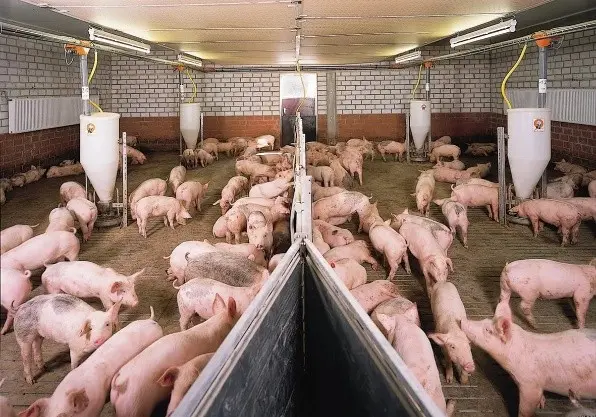
At home or on the farm
Whether to raise pigs in a home pigsty or make a separate farm depends on the size of the land owned/leased. The distance that should separate the pigsty from the border with the neighboring plot directly depends on the number of pigs (but not more than 15 pigs).

A manure storage facility must be equipped on the site, designed for at least a year of excrement collection. And this storage should be even further from the neighboring site or hermetically sealed. Since pig excrement quickly becomes liquid due to the large amount of urine, the storage should be concreted.
Due to these limitations, in order to decide whether to make a farm or you can get by with your own site, you will have to take a tape measure and measure all the distances. Considering that the average size of land plots in a village does not exceed 20 acres, it is unlikely that you will be able to have more than 5 pigs on a personal plot. With so many heads, pig breeding is not profitable as a business. It’s just an income boost. If you want to deal with pigs, you will have to think about a pig farm.
Choosing a location for a pig farm
Requirement for any livestock complexes and farms: location outside the settlement. Even if this point is only a village. If the distance between a residential building and a pigsty on a household plot can be only 15 m, then for a pig farm this distance is already at least 100 m. The pig farm must also be located at a distance of at least 150 m from other livestock buildings.
The site must be selected on a hill. There must be at least 2 m from the foundation to groundwater. It is not allowed to build a farm near water bodies.
The farm area must be surrounded by a fence. Trees are planted around the perimeter.
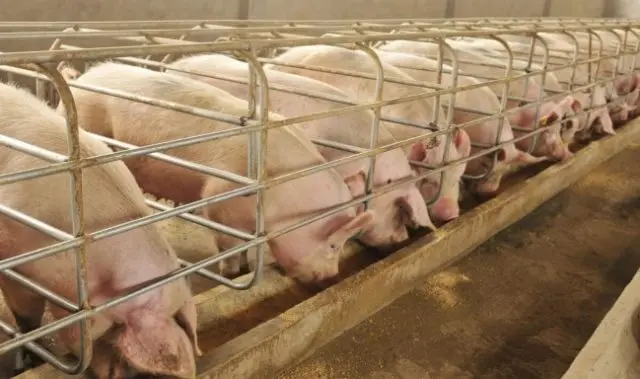
List of required documents
After the form of the future enterprise has been determined, it is necessary to draw up documents.
Starting an activity without prior registration is punishable by fines. For individual entrepreneurs, you need to provide the tax office with:
- application;
- a photocopy of the passport;
- receipt of payment of the fee (800 rubles).
For an LLC, a more voluminous package of documents is required, including the Articles of Association. The duty for LLC is 4 thousand rubles. In both cases, registration will be completed within 5 working days.
But even after the enterprise is formalized, it is still too early to calculate the exact business plan for breeding pigs. There are a few more documents you need to get:
- a lease agreement or a document confirming the ownership of a land plot;
- permission from the local administration for the construction of a livestock building;
- permission from SES, state labor inspectorate, fire supervision.
All these operations are carried out before the purchase of livestock. But the fire inspectorate and SES will only be interested in the finished building. Therefore, it must be taken into account that additional costs for the elimination of deficiencies are possible.
Breed selection
Regardless of the business objectives, the main requirement for a sow is high fertility. Next comes the differentiation according to the requirements:
- quick set of muscle mass when breeding for meat;
- tendency to salting when diluted on lard;
- good survival of piglets when bred for sale.
Trying to breed a new breed “on the knee” is not worth it. For breeding work, a large number of livestock is needed. This is especially true for inbreeding-sensitive pigs. Usually, new breeds of pigs are bred at once in several large farms operating under the same program.
It is better to buy piglets for breeding in different farms to avoid inbreeding. If the plans are only fattening and selling pigs for meat, you can buy piglets in one farm. But in any case, large, healthy piglets without exterior flaws are selected.
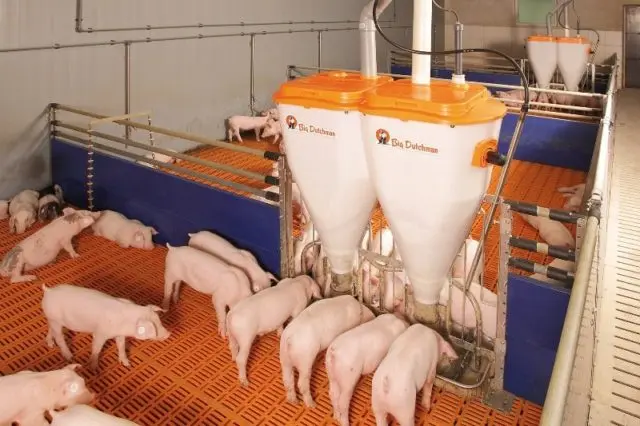
feed base
For rapid growth, pigs need compound feed. Before starting a business, you need to find out where and at what price you can buy feed in the area. It can be a wholesale warehouse or a manufacturing plant. It is more profitable to conclude an agreement with the plant for the supply of feed. The plant will not leave 10 bags, but from 1 ton it is already possible to agree on transport from the plant. Juicy feed can be bought from a farmer who grows root crops or gourds.
Staff
When drawing up a business plan for setting up a mini-pig farm, it makes no sense to include maintenance personnel in the calculations. With a large number of pigs, the number of staff depends on the level of automation of the farm. With completely manual labor with minimal mechanization (wheelbarrows for feed and manure cleaning), about 70 pigs should fall on one pig. With full automation, one employee will be enough for several thousand heads.
It makes no sense to keep a veterinarian and livestock specialist at the rate. Zootechnics can be involved under a one-time contract. A veterinarian is also not needed every day, but his phone number should always be at hand. Mandatory scheduled vaccinations should be carried out by the state veterinary service with the preparation of relevant acts.
A livestock specialist can also carry out artificial insemination of pigs. In this case, it will not be necessary to keep boars on the farm, it will be possible to avoid inbreeding and receive high-quality piglets from elite producers.
If there are 50 pigs per pig, he will be able to keep his farm area clean. But handymen will be needed to unload the feed. Here, too, it is necessary to look at the number of pigs and the size of purchased batches of feed. For 50 heads, 150 kg of feed per day will be required, for 10-30. If the purchase is rare, but many at a time, it makes sense not to keep the worker at a rate, but to attract from the outside once.
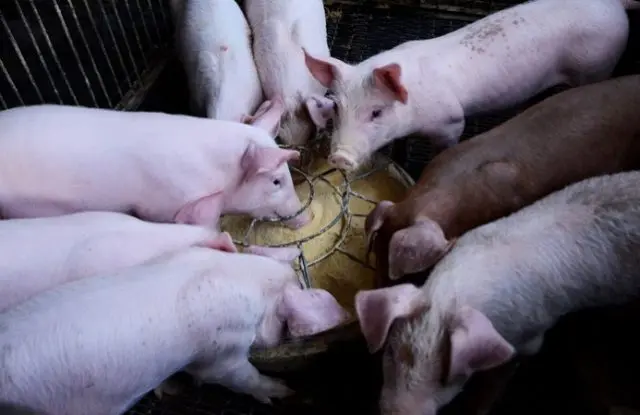
Preventive measures
Since pigs are prone to many diseases, it is not uncommon for a business owner to vaccinate their animals. Vaccinations against dangerous diseases such as foot-and-mouth disease, anthrax and rabies are administered by the government and are usually free of charge. But colibacillosis, Aujeszky’s disease, swine erysipelas and other similar diseases are not dangerous for humans. If there is no threat of an epizootic, the pig breeder will have to do these vaccinations at his own expense.
The number of doses in a vial may vary. But often the number of doses starts at 20 or even 50. After opening, the vaccine is stored for only a few hours. At the same time, at least two injections with a gap of several weeks are usually needed to develop immunity. Accordingly, for each disease, 2 vials of the vaccine will need to be purchased. There is no point in buying everything. The most common and dangerous for pigs: edematous disease, pasteurellosis, colibacillosis. The approximate cost of a vial of vaccine is 400-450 rubles. based on 20 doses. Thus, 2700 rubles will need to be spent on the purchase of a vaccine. And it is better to have an “airbag” in the amount of 20-50 thousand rubles. in case the pigs get sick with something else.
Product sales
When raising pigs for meat or lard, you will have to obtain the appropriate certificates to allow you to trade pig products. Theoretically, a farmer can sell meat in the market. To do this, you need to rent a place. In practice, all the places in the market are occupied. And small owners are forced to sell pork to dealers. Illegal option: trade “from the ground”.
With piglets, everything is easier in terms of the necessary veterinary certificates. Since slaughter is not planned, moving a piglet from one pigsty to another will require permission from the veterinary service and obtaining a certificate of mandatory vaccination. Observing the laws, getting both is not difficult. Piglets are usually sold by an ad on Avito or other similar sites.
Buyers usually do not require breeding documents for piglets. But if a breeding ground for thoroughbred pigs was planned as a business, you will have to take care of the documentation for the breeding farm. But the distribution channels will be the same as with the simple sale of piglets: ads. The only advantage: a thoroughbred pig can come from distant regions.
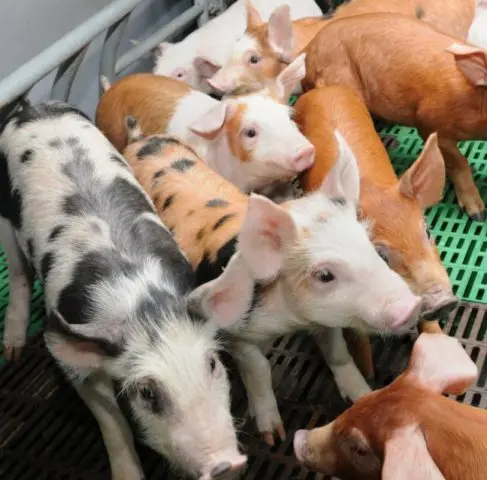
Initial investment
Taking into account the multiplicity of pigs, the farm will have to be built not for 10-20 heads, but immediately for 50-100. Even if the business is focused on the sale of piglets, there is no guarantee that they will all be sold out before 2,5 months. and you don’t have to fatten gilts for meat. When calculating the cost of construction, it is necessary to take into account:
- purchase / lease of land;
- obtaining the necessary permits;
- project cost;
- summing up communications;
- building materials;
- construction workers’ wages
- feed cost;
- the cost of the initial stock.
Least of all in this list will cost “revolving funds”. 10-20 heads of piglets will cost 40-80 thousand, a six-month supply of feed will cost 110-220 thousand rubles. But the construction of the farm in total will cost at least 5 million rubles.
At the same time, the exact prices will depend on the region, and it is impossible to indicate the real cost of building a farm without reference to a specific area. In any case, expect that the initial investment will be less than 6 million rubles. not worth it.
Unexpected expenses
The need to pay for a certificate for the sale of finished products can hardly be attributed to unforeseen expenses. This can only happen if the original intention is to sell the piglets. When a business is oriented towards pork production, the cost of such certificates must be immediately taken into account when drawing up a business plan. However, these costs are low. Within 5 thousand rubles.
Much worse if a disease breaks out on the farm. In this case, you need to have some cash reserve. Strictly speaking, this is a situation where the more money set aside for illness, the better.
Possible rise in price of feed and their delivery to the farm. Almost certainly, the construction of the farm itself will be more expensive than planned, since building materials must be taken with a small margin. Installation of automatic equipment can also be more expensive than planned.
In general, at the initial stage, the principle “it is better to remain than not enough” is very good. The rest of the loan can always be repaid, but getting a second loan will be very difficult.
Even the owner of the business in the video admits that it took them more than a million rubles to buy piglets and feed. Farm building not included.
Risk assessment
The most serious risk today: ASF. Because of this disease, in many regions it is already unprofitable to keep piglets for business. And no preventive measures will help in this case. When ASF is detected, all livestock within a radius of 5 km are destroyed. Compensation is usually not satisfactory to pig owners.
Other risks in pig production include:
- drop in demand for products;
- rising feed prices;
- decrease in fertility of sows;
- epizootic outbreak;
- disappearance of the feed supplier from the market.
A sudden drop in demand for pork or piglets is a serious risk factor in pig production. A very clear example is the Vietnamese fold-bellied breed. At the peak of demand, it was very profitable to sell piglets, but the pigs are prolific, and the market is quickly saturated. Demand fell and the piglet business became unprofitable.
Practice shows that recruitment can also be safely included in the risks of the pig business. It should be noted that it is unlikely that the first time you will be able to find conscientious employees.
How to start a pig business in the village
The rules for keeping pigs in the village are not as strict as for villages or garden associations. In the village, before you start pigs in an amount greater than 2 heads, you will have to collect the signatures of the neighbors that they do not mind. General: compliance with the standards for construction. That is, not closer than the distance established by law to the border of the neighboring site. The distance is measured from the wall or corner closest to the boundary of the site. You can have no more than 15 heads of pigs on a personal plot.
Walk-free keeping of pigs is a common rule for any form of ownership and any number of animals. That is, the classic picture from the books “pig in a puddle” is prohibited by law these days. This means that grazing pigs on the pasture is also prohibited.
If the owner of the house is only looking at the pig business, it makes sense for him to start 2-5 heads first and try how realistic it will be to sell pork or piglets.
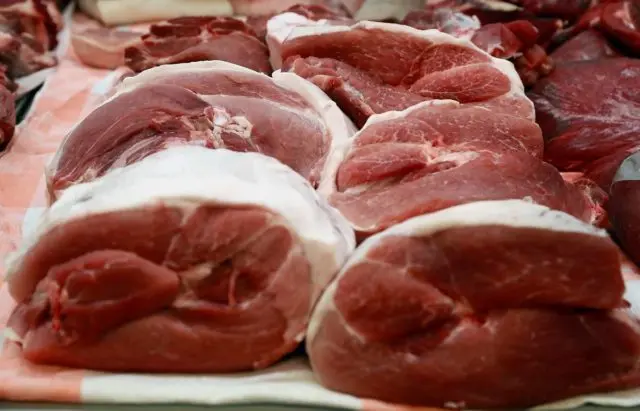
Pig breeding business plan with calculations
The advantage of pig farming on a personal plot is that you do not need to build a pig farm. An ordinary barn is enough for 2-5 pigs. And if you take a frost-resistant breed, then you don’t even need to insulate the barn. In this case, the entire business plan will be reduced to the purchase of pigs and feed, fattening and subsequent sale of pork. Usually underground.
It is most convenient to calculate the costs and incomes when raising 10 pigs. The average cost figure, which, if necessary, can be reduced or increased:
- 10 piglets at the age of 2 months. – 40000 rubles;
- feed for 6 months – 110000 rubles;
- succulent feed – 20000 rubles;
- water and bedding for six months -50000 rubles.
Total 2200:00 RUB
At 8 months, piglets should weigh 100-120 kg. After slaughter, the carcass yield is 80%, that is, 80-96 kg of pork. From 10 pigs 800-960 kg will be obtained. With an average price for pork of 270 rubles. income from 10 carcasses will be 216-259 thousand rubles.
The total profit is 4-39 thousand rubles. Unfortunately, this figure is confirmed by the villagers themselves. They usually sell their products to regular customers at least 2 times more expensive than the store ones, without dedicating the authorities to the details of the business. This applies to any product: milk, eggs or meat. This is explained by the fact that their products are environmentally friendly. In fact, a private trader with a small livestock has very high overheads and cannot afford to sell cheap.
Business plan for making money on piglets
There is also an option to make money on piglets. In this case, fewer pigs can be kept in the backyard, saving on feed and bedding. Or at the same cost to get a higher income. But we must remember that in addition to sows, you will also have to keep a boar. Or pay to use someone else’s. Artificial insemination in a private backyard with a small number of sows is not profitable.
Expenses at the rate of 9 sows and 1 boar within six months will be the same as for fattening for meat, that is, 220 thousand rubles. assuming an average of 10 piglets produced by sows, 90 pups will be produced every six months. When the piglets reach the age of one month, it is already possible to advertise the sale of piglets. For 2 months, 90 piglets will eat feed for 27 thousand rubles. The total cost will be 247000.
When selling piglets for 4000, the income will be 360000. Profit – 113000. More profitable than growing for meat and there are no problems with veterinary services. But this business is possible only with a stable demand for piglets.
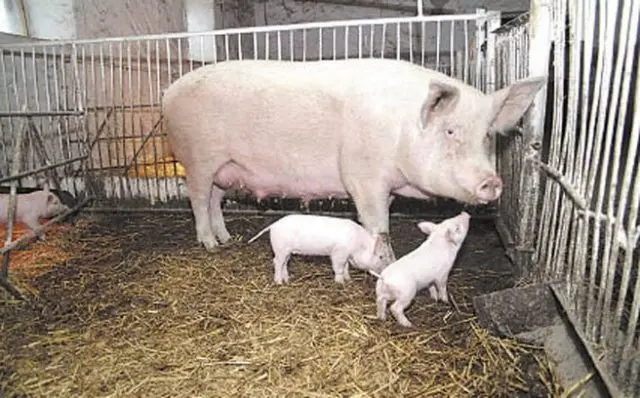
Tips for Entrepreneurs
The main problem of pig breeders is diseases of the gastrointestinal tract in piglets. Not least because many people believe that pigs can be fed anything. In fact, this is not so. By “anything” is meant a wide food base, but the products must be fresh. You can avoid the risk of edematous disease and other problems with the gastrointestinal tract if you do not wean piglets from the pig too early and feed them with quality feed.
Other infectious diseases can be dealt with through prophylaxis and observing sanitary and veterinary standards for keeping animals. With a normal content, the death of animals is 2-4% of the total number of pigs on the farm.
To prevent a shortage of feed, it is necessary to find an alternative feed supplier in advance, who can be contacted in case of emergency. It is desirable to have multiple supply channels.
Reduced fertility of pigs due to age is avoided by culling the sow on time. Culling is done at 4 years.
Conclusion
Starting pig breeding as a business, having succeeded in this type of activity, is possible only if a sufficiently large farm is opened and production is maximally automated. But when breeding pigs on a personal plot, you can gain experience in raising piglets and understand how interesting this particular type of business is.









